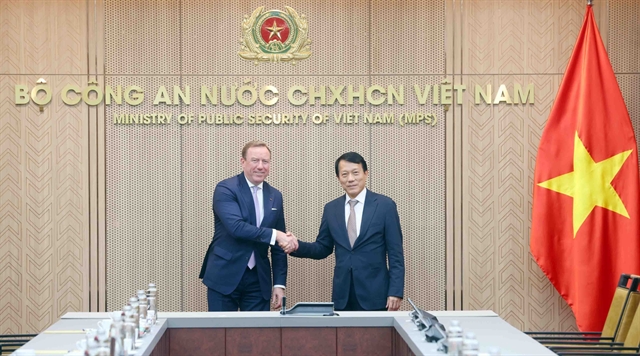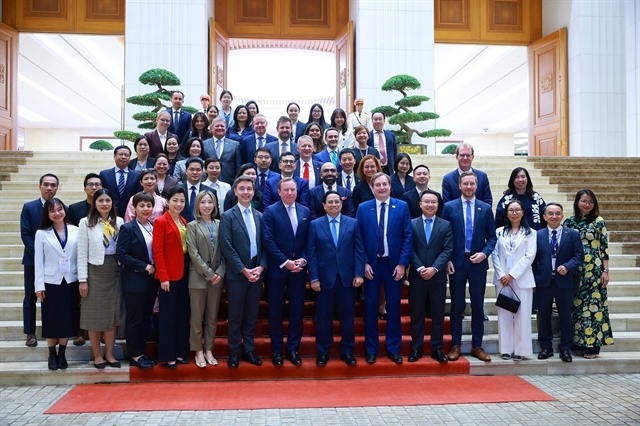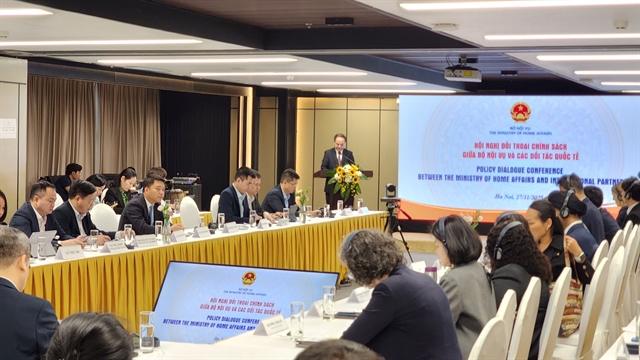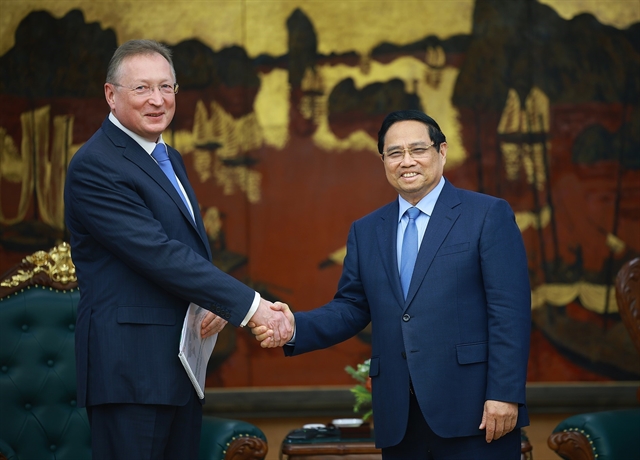 Politics & Law
Politics & Law
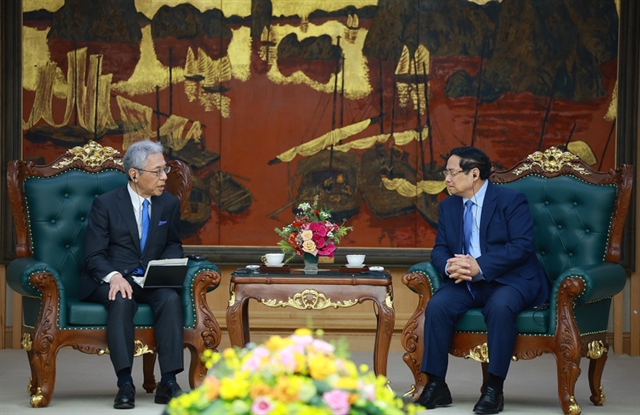
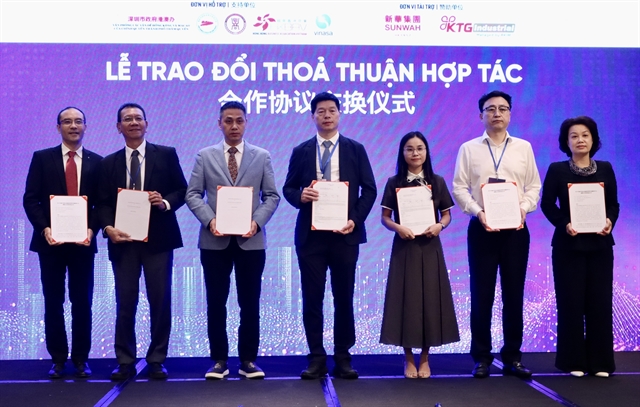
|
| Vietnamese and Chinese businesses at the HCM city and Guangdong-Hongkong-Macau Greater Bay Area Investment – Trade Forum in HCM City on Thursday. VNA/VNS Photo |
HCM CITY – Việt Nam and China, particularly HCM City and the Guangdong–Hong Kong–Macau Greater Bay Area (GBA), hold considerable potential to strengthen cooperation across investment, finance, science and technology, and logistics.
The remarks were heard at the HCM city and Guangdong-Hongkong-Macau Greater Bay Area Investment – Trade Forum in HCM City on Thursday.
Co-organised by the GBA Entrepreneurs Alliance and the Hong Kong – Việt Nam Chamber of Commerce (HKVCC), in collaboration with the Investment and Trade Promotion Centre of HCM City (ITPC), the event aimed to enhance multifaceted collaboration between the southern Vietnamese metropolis and the GBA, as well as between the two nations.
Nguyễn Văn Dũng, Vice Chairman of the HCM City People’s Committee, said the forum marked a concrete step to realise shared strategic visions of the two countries’ top leaders. It provided a platform to explore emerging trade and investment trends, connect potential partners, and deepen bilateral cooperation, especially with Chinese firms from the GBA seeking sustainable development opportunities in Việt Nam.
China remains Việt Nam’s largest trading partner in ASEAN. It ranked as Việt Nam’s third-largest investor (after Japan and South Korea), with US$1.81 billion in newly registered capital in the first five months of this year, accounting for 25.8 per cent of the total. Notably, Chinese investors have increasingly focused on electronics and auto parts manufacturing in Việt Nam, leveraging the country’s cost and geographic advantages in global supply chains.
HCM City led the nation in FDI attraction during the first five months of 2025, accounting for 39.1 per cent of new projects. Chinese investors continue to show strong interest in the city, particularly in processing and manufacturing, electronics, and green energy. This shift reflects a growing trend of investment in high-tech industries aligned with the city’s sustainable development agenda.
Dũng highlighted HCM City’s role as a special metropolis and Việt Nam’s leading economic hub. Although it currently accounts for only 0.6 per cent of Việt Nam’s land area, it contributes nearly 20 per cent of the national GDP and 25 per cent of national budget revenue. By September 15, 2025, upon completion of the ongoing administrative merger, the new HCM City will expand significantly from 2,095 km² to over 7,000 km², and its population will increase from approximately 9.5 million to around 15 million. With expanded administrative boundaries, more abundant resources, and a more favorable, efficient investment environment, the city is poised to enter a new phase of growth with even greater development ambitions. This process also opens new opportunities for cooperation with international partners, including China.
The city is currently implementing several strategic initiatives to promote economic development and global integration. The city aims to learn from Hong Kong, one of the world’s leading financial centres, particularly in applying green finance to develop into a sustainable green financial hub. Hong Kong’s experience offers valuable lessons for HCM City at this crucial stage, he said.
The city also seeks to expand cooperation with partners from the Greater Bay Area in infrastructure development, a key priority in the post-merger period. The integrated development model of Guangdong, Hong Kong, and Macao serves as a useful reference for HCM City in promoting regional connectivity and growth. In addition to hard infrastructure, the city hopes to strengthen “soft connectivity” through digital transformation partnerships with the GBA, focusing on AI technology sharing in urban governance, developing an interconnected big data ecosystem, and launching Fintech platforms for cross-border payments.
The Vice Chairman also noted that the Mekong Delta region and HCM City are currently major food suppliers to China, particularly the Greater Bay Area. Therefore, both sides should enhance cooperation in developing the food processing industry by optimizing agricultural logistics, boosting trade, and sharing modern processing technologies to help HCMC businesses better access the GBA market.
Dr. Jonathan Choi, Chairman of the GBA Entrepreneurs Alliance, HKVCC, the Chamber of Commerce of Hong Kong in Qianhai (Shenzhen), and Sunwah Group, delivered opening remarks on the GBA’s strengths. He emphasized Hong Kong’s role as a global financial centre with a transparent legal system, deep capital markets, and close ties to international investors; Shenzhen’s strength in rapid tech innovation and hardware manufacturing; and Guangzhou’s leadership in research, biotech, and smart transportation. Each city contributes unique advantages, forming a well-integrated network to swiftly commercialize ideas from lab to market.
Dr. Choi expressed confidence that the GBA would continue serving as an effective bridge between China and Việt Nam, not only in trade but also in innovation, technology transfer, and sustainable investment. The openness and dynamism of GBA cities, combined with Việt Nam’s drive for deeper integration, will lead to increasingly practical and enduring partnerships.
Representing the Shenzhen Municipal Government, Jiang Likun highlighted Shenzhen’s pivotal role in the Greater Bay Area and its status as a leading economic and technological hub in Asia. With a GDP of $516.9 billion in 2024, Shenzhen stands out in strategic sectors such as 5G, artificial intelligence, and new energy vehicles.
He warmly welcomed Vietnamese authorities, businesses, and partners to visit Shenzhen and explore cooperation opportunities. Simultaneously, he expressed strong support for Shenzhen enterprises investing and launching startups in Việt Nam, while encouraging Shenzhen residents to visit Việt Nam’s scenic destinations to foster mutual understanding and deepen the enduring friendship between the two peoples. — VNS


